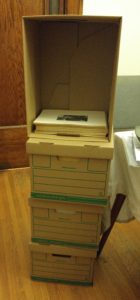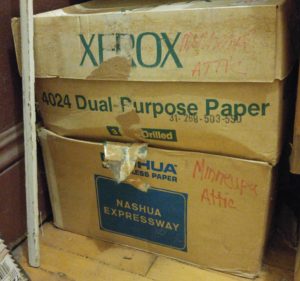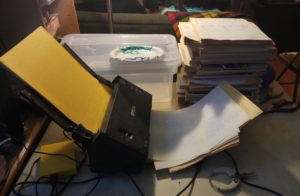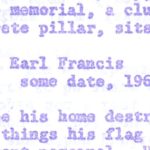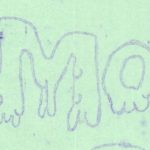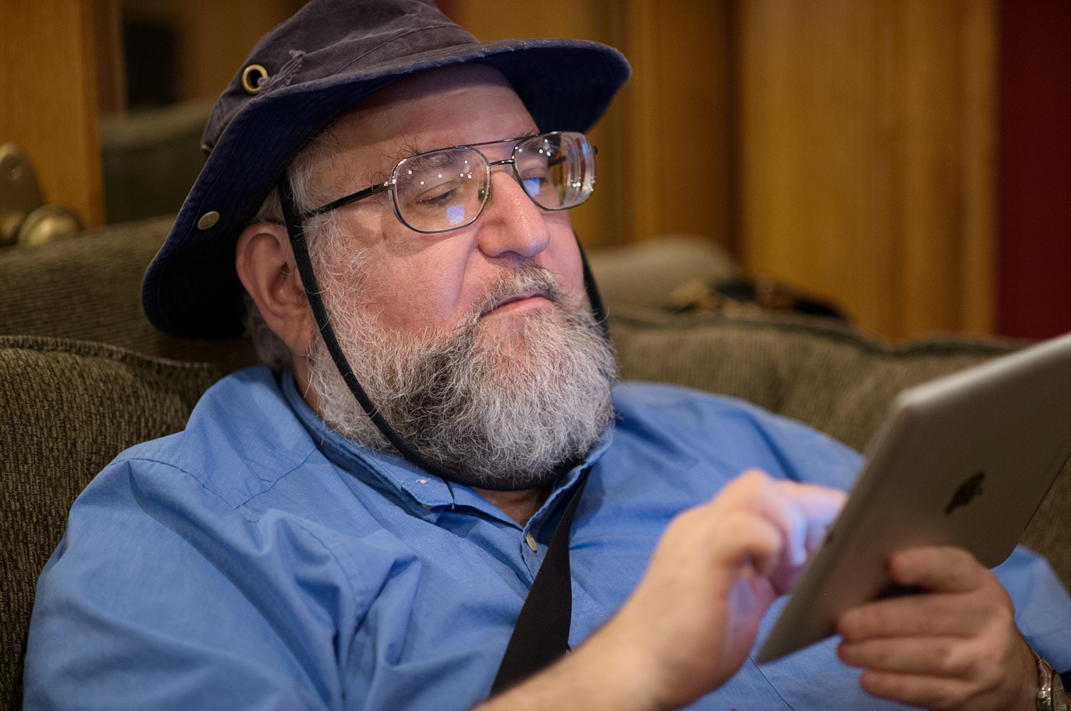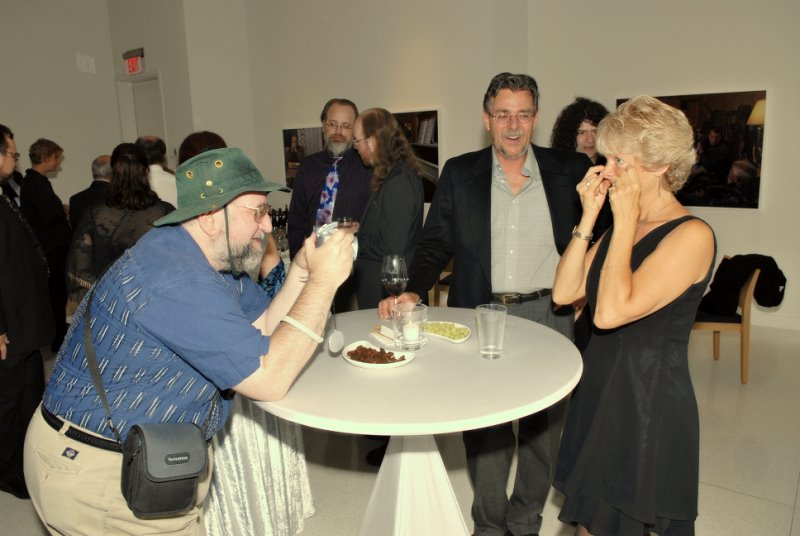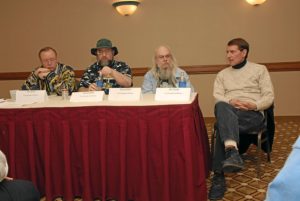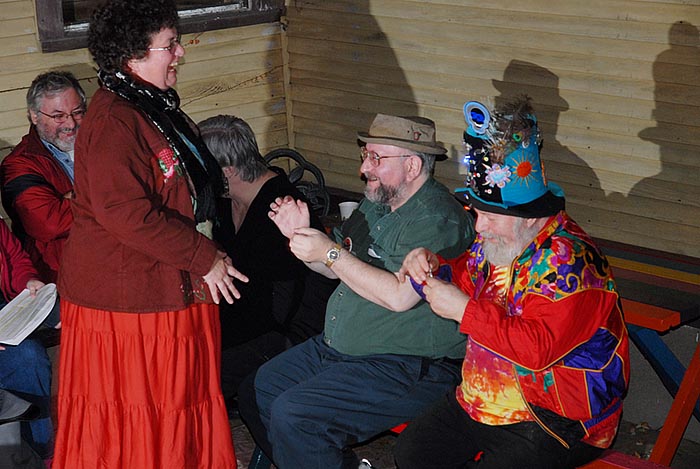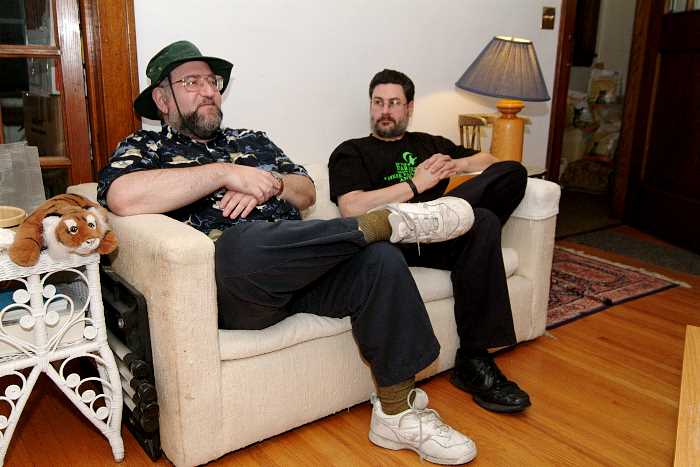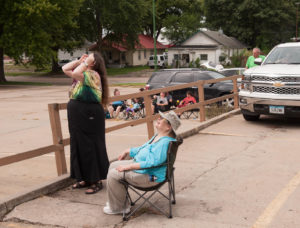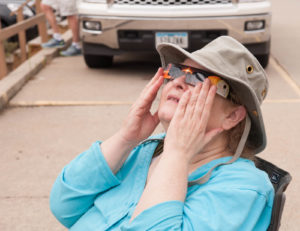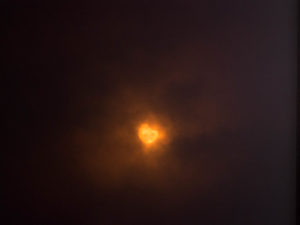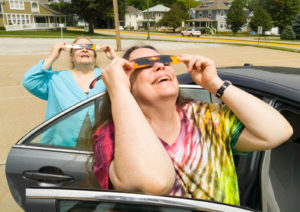For a lot of the Minnesota Science Fiction Society members, including me, Minneapa was an important part of what kept the club going.
(An “APA” or Amateur Press Association can maybe best be described today as an early, dead-tree type of social media. Each member submitted the required number of copies of their “zine” for each issue, which were then collated together, stapled into one or more sections, and sent to all the members. Our zines contained whatever we wanted, which was often our nattering / essays / rants on things important to us, plus comments on the other zines in the last issue. A new issue was collated every 3 or 4 weeks. The membership ran interestingly beyond just people from Minneapolis, and included quite a number of heavy-hitters from the SF community.)
Minneapa ran for 400 issues (not all with me involved), from 1972 to 2003. Some of these issues ran up to 400 pages (in 3 sections).
So, I’ve been working on scanning these for the Minn-StF archives. (They aren’t going to be published to the web; privacy and copyright issues don’t seem to allow that. They’ll probably be available on some terms to former members, though, and with luck will eventually be transferred to an institutional archive.) A couple of scanning sessions at Minn-StF meetings, plus a few more with the (borrowed) scanner at home, has produced this:
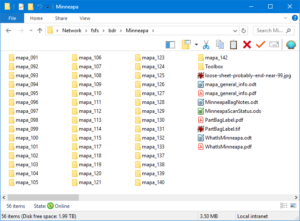
Today I got done with the boxes I had organized previously, and dug into the next three boxes. Here they are sorted by issue number decade:
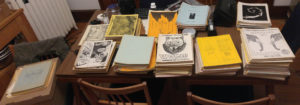

There is some duplication; this is my and Pamela’s old copies, and I joined before she did (may have dropped out sooner, not sure about that). And after this I have almost another 200 on the high end that neither of us was a member for (Dean Gahlon and Beth Friedman have agreed to provide those for scanning), and a bit of fill-in on the low end (about 1-55) (Martin Schafer has agreed to provide these for scanning).
A very rough estimate places this somewhere around 50,000 pages (a worst-case estimate gives 160,000 pages, but not all 400 issues were 400 pages). And especially in the early days, few of those pages were photocopied or offset printed; some were mimeographed, but most were dittoed, often using multiple master colors and on paper other than white. Purple on blue is one of my least favorites to try to OCR. Not all the printing was particularly good, either. Then there are the hand-written zines.
I keep fussing with ways of adjusting the scans to make them more legible (and to OCR better), and that’s an infinite task (rather like the Augean Stables in fact). But I may be improving the results somewhat (and I’m aiming for methods that can then be applied easily to groups of pages in later issues).
